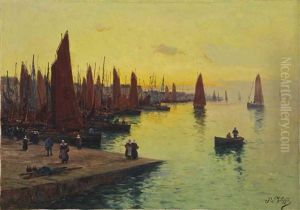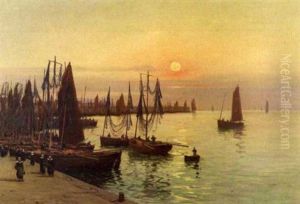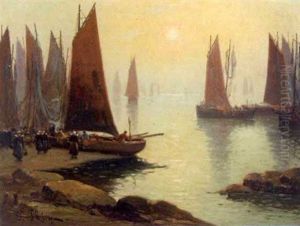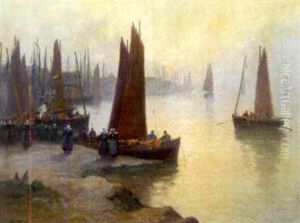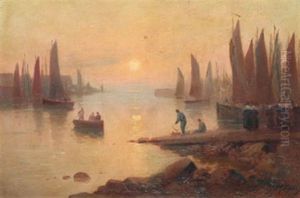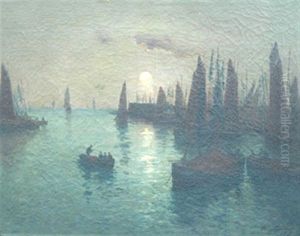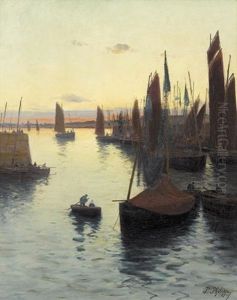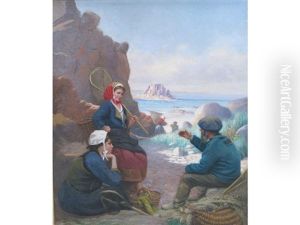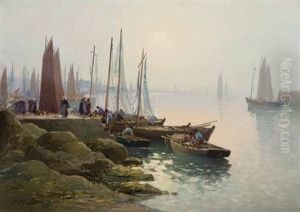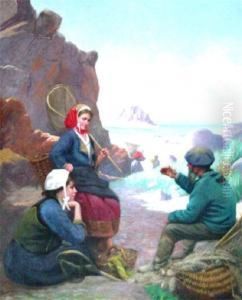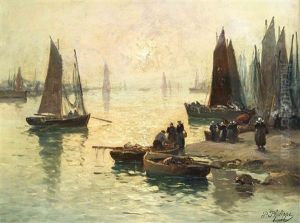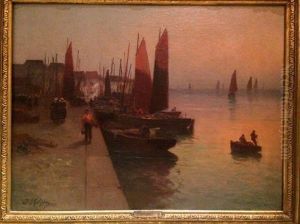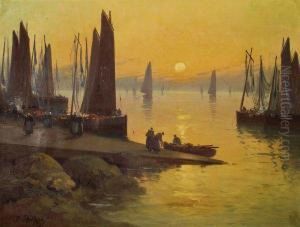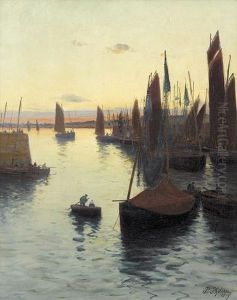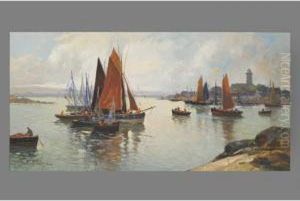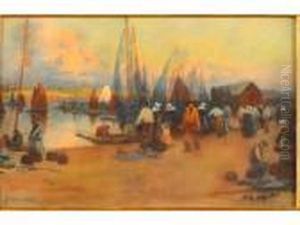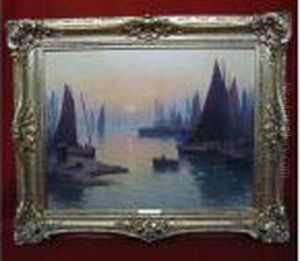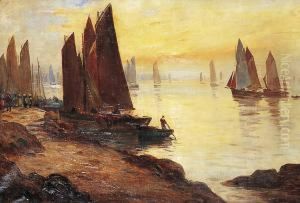Paul Philippe Paintings
Paul Philippe was a French sculptor known for his Art Nouveau and Art Deco works, primarily in the late 19th and early 20th centuries. He was born in 1870 in France, and not much is known about his early life or training. However, his work gained recognition for its elegance and the grace of its subjects, often depicting the female form in a variety of poses and attire, from dancers to everyday women.
Philippe specialized in chryselephantine sculptures, a luxurious form of decorative art that combines ivory and bronze to create figures of exquisite detail and beauty. His works are characterized by a refined finish and an attention to detail that reflects the opulence and sophistication of the time. The combination of ivory, used for the flesh parts, and variously patinated bronze, used for clothing and accessories, created a striking, lifelike quality that was highly sought after by collectors and the bourgeoisie.
During his career, Philippe also produced a number of statues, busts, and decorative objects that were in vogue during the late 19th century. His works were exhibited in various salons and galleries, contributing to the Art Nouveau movement, which emphasized organic shapes and lines, and later to the Art Deco movement, which was known for its geometric forms and streamlined aesthetics. Paul Philippe's work encapsulates the transition between these two styles, embodying the fluidity of Art Nouveau with the emerging boldness of Art Deco.
Despite his success as a sculptor, Philippe's life and career are not as well-documented as those of his contemporaries, and therefore, the biographical details available are limited. He passed away in 1930, leaving behind a legacy of work that continues to be admired for its artistic mastery and elegance. His sculptures can be found in private collections and occasionally appear at art auctions, where they are appreciated for their historical value and craftsmanship.
